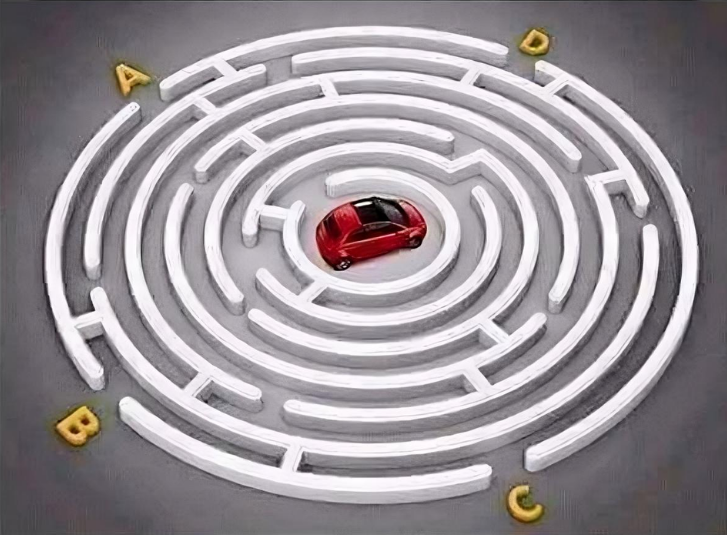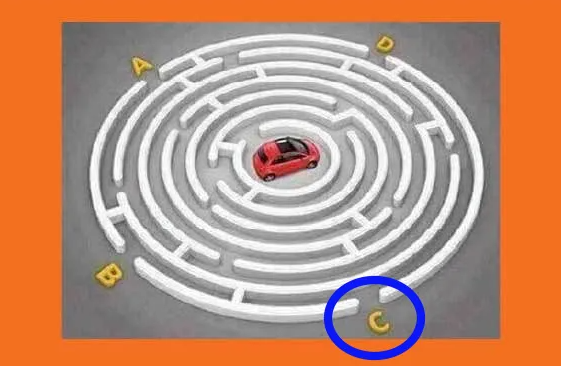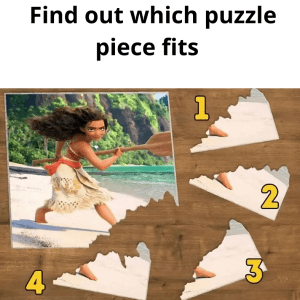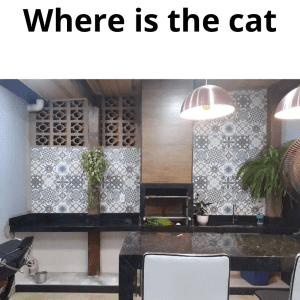Are you ready to put your puzzle-solving skills to the test? Today, we’re diving into a brain teaser that will challenge your patience and logical thinking. The objective: to help a red car escape from a complex, circular maze. The maze has four possible exits—labeled A, B, C, and D—but only one will lead the car to freedom. Are you up for the challenge? Let’s break down the puzzle and find the solution together.

When faced with a maze, many people tend to rush toward the nearest exit, assuming it’s the quickest route to freedom. But this impulsive approach often leads to failure. Why? Because these mazes are designed to mislead you with dead ends, barriers, and loops that send you back to the start. To solve this puzzle, you need a more methodical approach. Let’s discuss some common mistakes and how to avoid them.
- Ignoring Dead Ends: Some exits may seem accessible at first glance but can lead to dead ends or loop you back into the maze.
- Not Exploring All Paths: Focusing on the most obvious path without exploring alternatives is a surefire way to miss the correct exit.
- Failing to Work Backward: Sometimes, solving a maze from the exits back to the car can reveal the solution more clearly than working forward from the start.
With these traps in mind, let’s approach the maze with a clear strategy.
Step-by-Step Approach: How to Find the Correct Exit
We will solve this puzzle one step at a time, breaking down each part of the maze to ensure that we find the correct path for the red car.
1. Start at the Red Car’s Location
The car is stuck at the center of the maze, surrounded by multiple pathways. From this point, our goal is to systematically trace each available path to see which one leads to freedom.
2. Explore All Paths
The car has several possible routes it can take to reach the exits labeled A, B, C, and D. Instead of focusing on just one path, take a moment to evaluate each one carefully. Trace the path with your finger or mind, and don’t skip any potential turns.
3. Identify and Eliminate Dead Ends
As you trace the car’s route through the maze, you’ll encounter paths that lead to dead ends or loop back to the start. Make a note of these and eliminate them from your options. This process of elimination is key to narrowing down the viable paths.
For example, if exit A seems promising but eventually leads back to the car, we can safely cross it off the list.
4. Check for Barriers
Some paths might appear clear at first glance, but subtle barriers or turns might block the car from progressing further. Be meticulous and ensure you’re not skipping over any small barriers that could disrupt the car’s path. Paths that require “jumping” over obstacles are not valid.
5. Trace the Open Paths
After eliminating dead ends and blocked paths, focus on the remaining open routes. Trace these paths carefully to see which one leads to a viable exit without obstructions.
6. The Solution: Exit C is the Only Clear Path
After methodically tracing each route, you’ll find that exit C is the only option that allows the red car to leave the maze without any loops or barriers. It’s the path to freedom!

An alternative way to solve this puzzle is by starting from the exits and working your way back to the car. Sometimes, by tracing the maze in reverse, you can gain new insights into the structure of the maze and quickly identify the correct path. In this case, working backward from exit C would have led you straight to the car without confusion.
Puzzles like this are more than just games—they are exercises for the brain. They challenge you to think critically, sharpen your problem-solving skills, and practice patience. Solving puzzles regularly can improve your logical thinking and make you a better problem-solver in both personal and professional situations.
Now that we’ve solved the puzzle together, why not try another one? Puzzles like this are not only fun but also great for developing mental agility. Each maze or puzzle you tackle builds your ability to think logically and creatively. So, grab another puzzle, trace the paths, and see where they lead. And remember: the best way to improve is by learning from the mistakes you make along the way.


